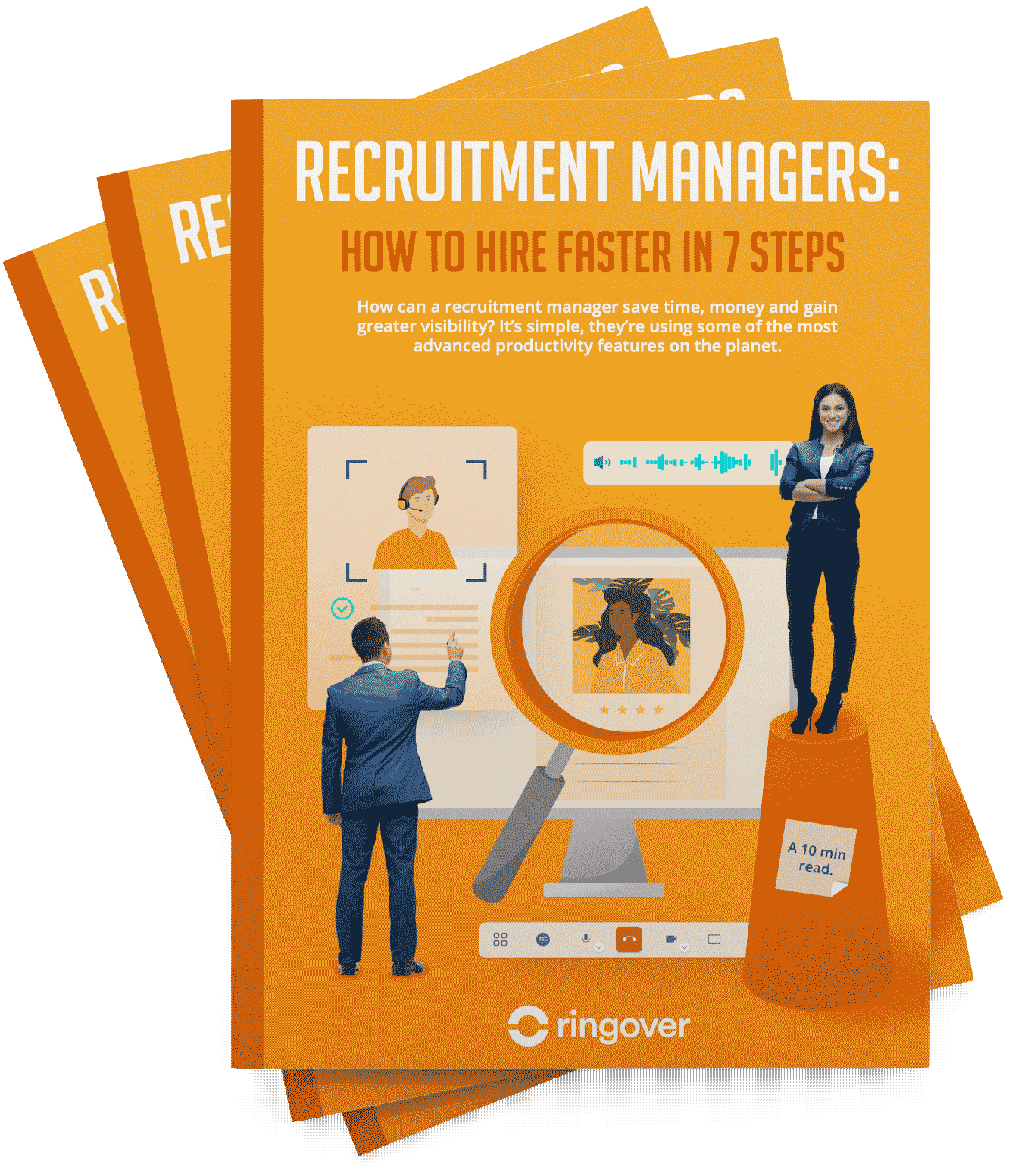Summary
For talent acquisition professionals, understanding and adapting to talent acquisition trends is essential for attracting, retaining, and developing top talent. In 2025, the focus is not just on filling job openings but on creating a holistic recruitment process that enhances the candidate experience, leverages data-driven insights, and prioritises diversity, equity, and inclusion (DEI).
The digital future of talent acquisition is here, with a staggering 97% of employers planning to increase their investments in recruiting technology by 2025. This shift is driven by the recognition that technology, particularly AI, can revolutionise every stage of recruiting. From AI-powered HR tools to predictive analytics, these innovations are set to streamline recruitment processes, improve the quality of hires, and help employers build stronger relationships with both candidates and clients.
Whether you are a seasoned recruiter or an HR professional looking to stay ahead of the curve with the talent acquisition trends 2025, this guide will help you navigate the future of talent acquisition with confidence.
12 Talent Acquisition Trends of 2025
1. AI and Generative AI: Efficiency and Expertise
AI will continue to grow in importance, but it also comes with its own set of challenges. Organisations will need professionals who are adept at using and developing AI tools to maximise efficiency in the recruitment process. Balancing AI use with human skills will be essential to maintain a personal touch in hiring.
One way to dip your toe into using AI in recruiting is by integrating Empower by Ringover with your CRM and/or ATS. This conversation intelligence software uses sentiment analysis to understand the emotions expressed and topics discussed during a call.
Empower helps recruiters better understand candidate and client needs thanks to its various features. First, it helps recruiters work more efficiently and effectively because it automatically transcribes and summarises calls. Therefore, recruiters can parse through an extensive communication history quickly, catching all the subtleties expressed in a conversation that might go overlooked without the power of AI. Secondly, Empower creates a personalised dashboard for each user with recruitment KPIs like turns to speak, monologues, speaking speed, and more. These metrics allow recruiters to improve their pitch and overall communication to better serve both candidates and clients.
2. Enhanced Candidate Experience
The candidate experience will be a top priority, from the career site to the interview process. Tools like Ringover facilitate easy interview scheduling and personalisation, ensuring candidates feel valued and engaged throughout the hiring process.
The quality of the candidate experience hinges on prompt and personalised communication with candidates, who rely on recruiters to assuage their stress with prompt responses to questions. That's where VoIP software like Ringover comes in handy.
Ringover's omnichannel contact centre software has quickly established it as a top communication platform for recruiters. Not only does it allow recruiters to centralise their communication history (whether it be call logs, text messages, or even WhatsApp exchanges), it also provides key productivity features like video calls, call campaigns, and more.
3. Data-Driven Decision Making and Predictive Analytics
Analytics and predictive analytics will play a vital role in understanding past performance and forecasting future needs and trends. This will help organisations better respond to seasonality and track key metrics such as source of hire, time to fill, time to hire, job age, offer acceptance rate, cost per hire, and vacancy cost. Additionally, diversity and inclusion metrics will be closely monitored to ensure a fair and inclusive recruitment process.
4. Skills-Based Approach
There will be a significant focus on critical skills and a skills-based approach, including upskilling workers. This involves finding candidates with the necessary skills and de-emphasising the focus on education. Companies will look for a sweet spot where they can identify candidates who possess the required skills, regardless of their educational background.
5. Learning and Development
Investing in learning and development will be essential to retain top talent. This includes providing continuous training and development opportunities to help employees grow professionally and personally within the organisation.
6. Employee Well-being
Prioritising physical and mental health will become a cornerstone of talent acquisition strategies. Companies will need to demonstrate a commitment to employee well-being to attract and retain top talent.
7. Strong Employer Brand and Employee Value Proposition
A strong corporate culture, including flexible and remote work policies, will be important. Employer branding will focus on showcasing a flexible and inclusive work environment, which can attract a larger talent pool and enhance the employee brand. Being open to compressed hours and relying on technology to support asynchronous work will also be key.
Incorporating a recruiting communication tool like Ringover’s VoIP phone offers not only phone features but also texting, videoconferencing, and even productivity features like IVR menus which combine to create a stellar experience for both candidates and clients.
8. Quality of Hire
The quality of hire will be measured by looking at job performance, team fit, cultural alignment, productivity, and retention. There will be a greater emphasis on soft skills to ensure that new hires integrate well into the team and contribute to the company's culture and success.
9. Agile Recruiting and Staffing
Recruiting and staffing teams need to be agile to adapt to the volatile market conditions. Investing in the skills of recruiting teams and ensuring recruiters can work across all stages of the hiring process will be essential. This agility will help companies respond quickly to changing market demands.
10. Preparing for Gen Z
Understanding what motivates Gen Z and reflecting these values in the employer brand will be critical. Companies need to showcase values that resonate with this generation and continuously learn and adapt to their needs and expectations.
11. Prevalence of Social Media in Recruiting
Social media will continue to play a significant role in recruiting, with companies leveraging platforms to reach a broader audience and engage with potential candidates more effectively. Social recruiting has become key with the emergence of powerful tools like LinkedIn Recruiter, or even targeted Facebook ads.
12. Transparency in Job Offers
Listing the salary range in job offers has become a valued practice, promoting transparency and trust with potential candidates. This transparency can also help streamline the negotiation process and improve candidate satisfaction.
What is the Biggest Challenge in Talent Acquisition?
Finding the Right Skills
One of the paramount challenges is the identification and acquisition of the necessary skills. Not only are technical skills difficult to evaluate, but often it can be complicated to understand what soft skills a candidate possesses until they are active in the position. Recruiters will have to determine how to measure a variety of candidate qualifications, taking into account technical and non-technical skills.
Balancing AI with Human Touch
The augmented utilisation of AI in recruitment offers advantages in terms of efficiency and scalability but risks making the hiring process impersonal. Achieving a harmony between the use of AI tools and preserving the human aspect is vital. It ensures candidates feel appreciated and understood, preventing the loss of top talent to an excessively automated approach.
Economic Uncertainty and Budget Constraints
The persisting uncertainty of the global economy and consequent budget limitations will continue to shape talent acquisition strategies. Organisations must adopt strategic and adaptable approaches, focusing on sustainable, long-term workforce plans over quick hiring solutions. This prudent strategy necessitates a thorough evaluation of the impact of each hire on team dynamics and the broader organisational objectives.
Skills Shortages and Upskilling
Skill shortages, especially in sectors such as technology, healthcare, and engineering, are expected to continue into 2025. To navigate these shortages, companies will need to be inventive in their recruitment tactics, incorporating AI, global hiring, and upskilling programs to close the talent gap. Investing in learning and development initiatives is necessary to keep essential hires engaged and equipped for long-term competitiveness.
Diversity, Equity, and Inclusion (DEI)
Maintaining DEI in the hiring process poses a significant challenge. Organisations should employ tools to analyze pay disparities, scrutinise promotions for inclusivity, and broaden candidate searches on a global scale to tap into diverse talent pools. Robust DEI initiatives are expected to bolster innovation metrics and enhance employee engagement and retention.
Remote Work and Flexibility
The ongoing discourse regarding remote work arrangements continues to present challenges. While a faction of leaders pushes for more in-person collaboration, a considerable segment of the workforce shows a preference for the flexibility offered by remote or hybrid models. Finding a middle ground that caters to both business imperatives and employee preferences is essential for maintaining a competitive stance in the talent marketplace.
Final Thoughts
As we navigate the complex and evolving landscape of talent acquisition in 2025, it is important to remember several key points. The integration of AI and automation will continue to streamline recruitment processes, but balancing these tools with a human touch is essential. Skills-based hiring, hybrid work models, and a strong focus on employee development and employer branding will be pivotal. Proactive candidate engagement, diversity and inclusion initiatives, and leveraging advanced recruitment technologies will also be critical.
To stay ahead, companies must invest in workforce planning, build robust talent pipelines, and prioritise agility and adaptability. By embracing these trends and strategies, organisations can attract, retain, and develop top talent, ultimately driving long-term success. Take action now to align your talent acquisition strategies with these trends and position your company for excellence in the competitive job market of 2025.
Talent Acquisition Trends FAQ
What are the five phases of talent acquisition?
Understanding the talent acquisition process is important for organisations aiming to attract the right candidates. This process generally unfolds in five main phases:
- Write Effective Job Descriptions: Start by clearly outlining the role, responsibilities, and required skills. This clarity helps in attracting suitable candidates.
- Find Qualified Workers: Utilize various channels like job boards, social media, and professional networks to identify and engage potential candidates.
- Review and Screen Talent: Assess resumes, conduct initial screenings, and create a shortlist of candidates based on their qualifications and suitability for the role.
- Conduct Effective Interviews: Implement a mix of traditional and innovative interviewing techniques, including AI-powered chatbots and tools like Ringover's Empower, to evaluate the candidates' skills and cultural fit.
- Extend Offers and Onboard: Present job offers to chosen candidates and ensure a seamless onboarding process to effectively integrate them into your team.
What is the skills based hiring trend in 2025?
The skills-based hiring trend in 2025 focuses on valuing practical skills and experience over traditional educational backgrounds. This shift towards competencies, certifications, and hands-on experience is especially pertinent in the tech industry, where specific skills like data science, AI, cloud computing, and cybersecurity are highly sought after. This trend facilitates the discovery of diverse talent pools and helps bridge skill gaps.
What is the future of recruiting in 2026?
Looking into the future, by 2026, the hiring technology market is projected to more than double its 2022 value, reaching $244 billion. This surge indicates a significant investment in recruitment enhancement tools and technologies, including applicant tracking systems, interview scheduling, and onboarding solutions. The continued reliance on AI, automation, and data analytics will empower companies to refine their hiring processes. Furthermore, there will be an increased focus on adaptability, agility, and resilience in recruitment strategies to excel in an ever-evolving market landscape.




